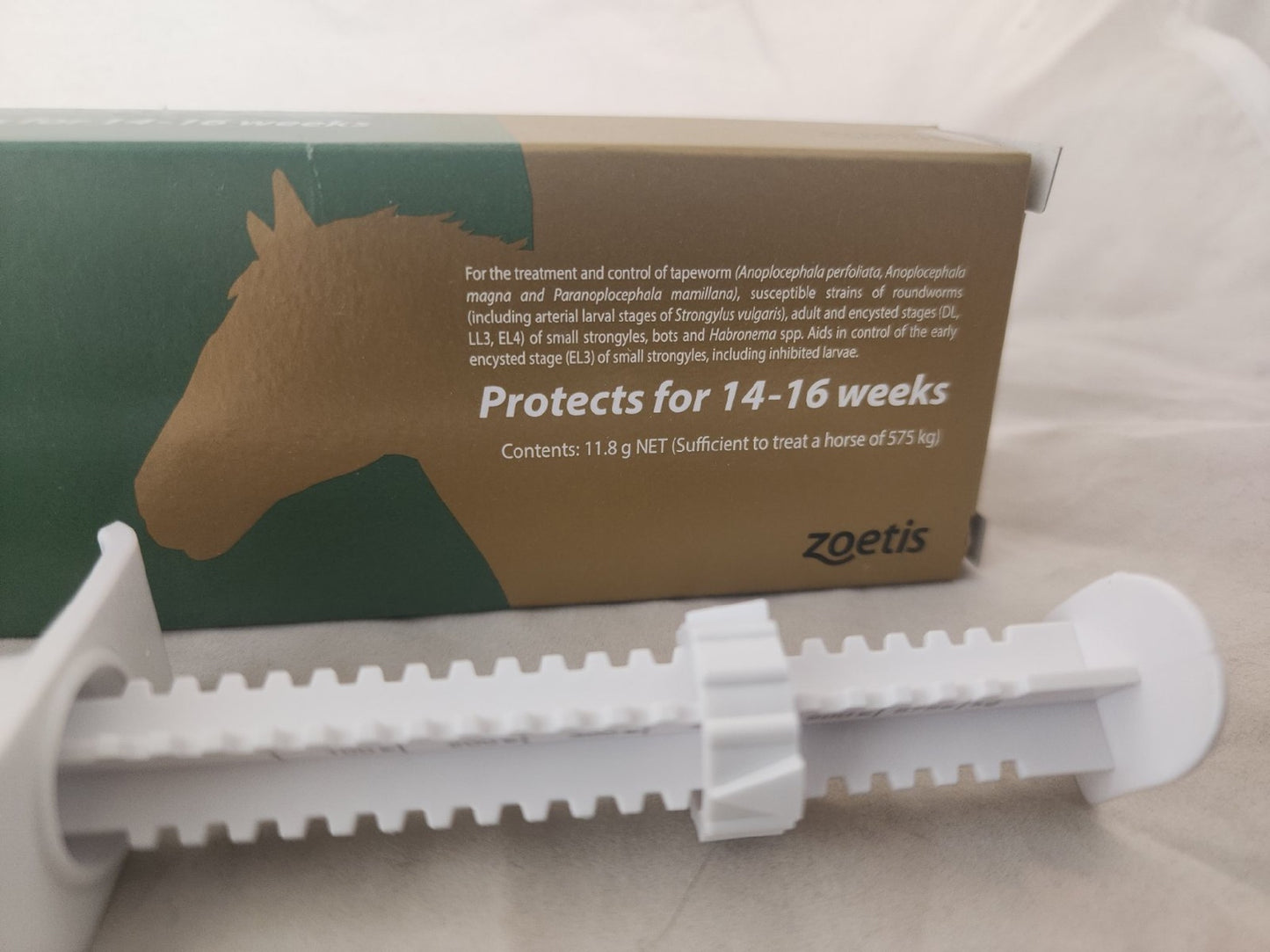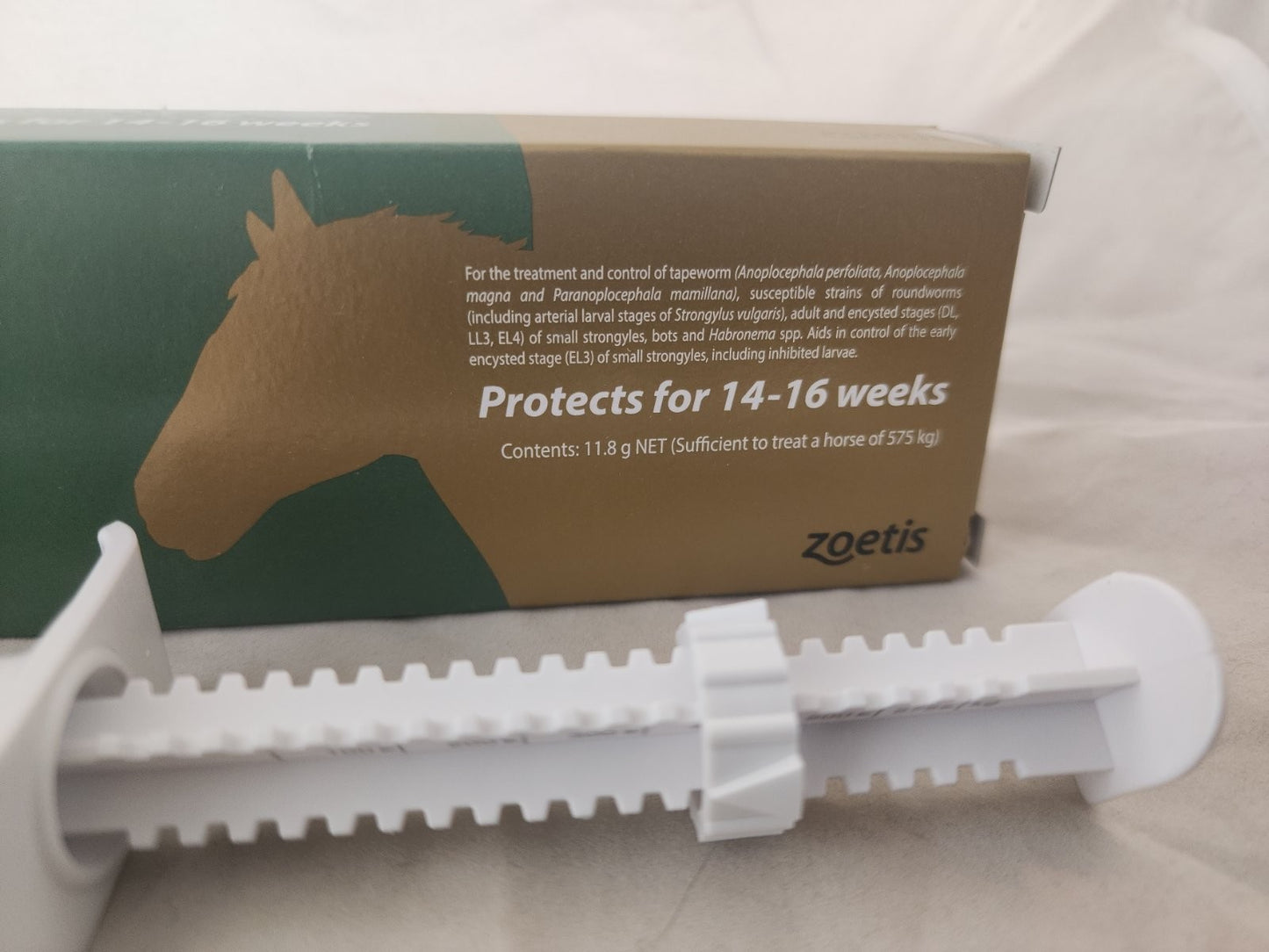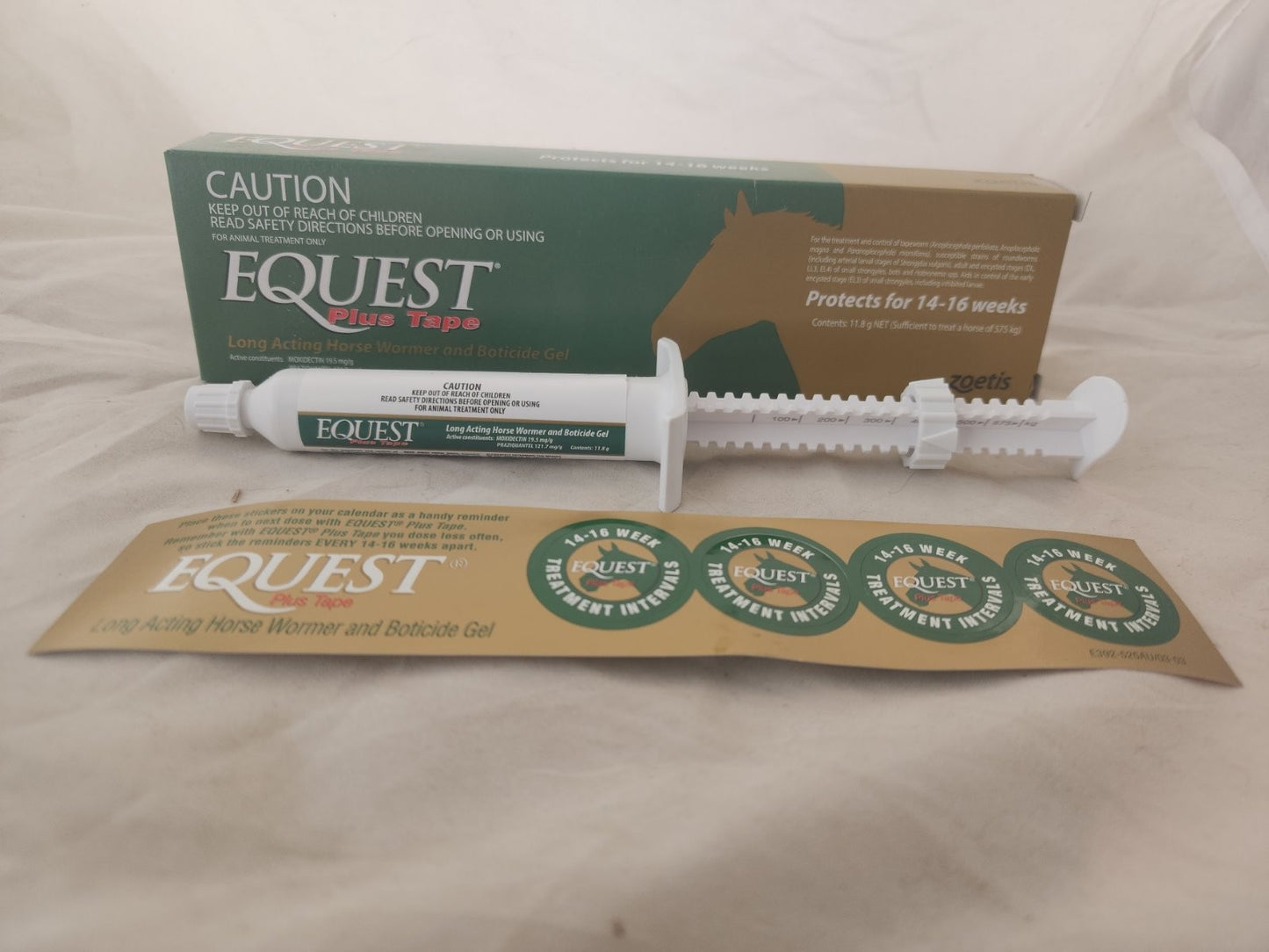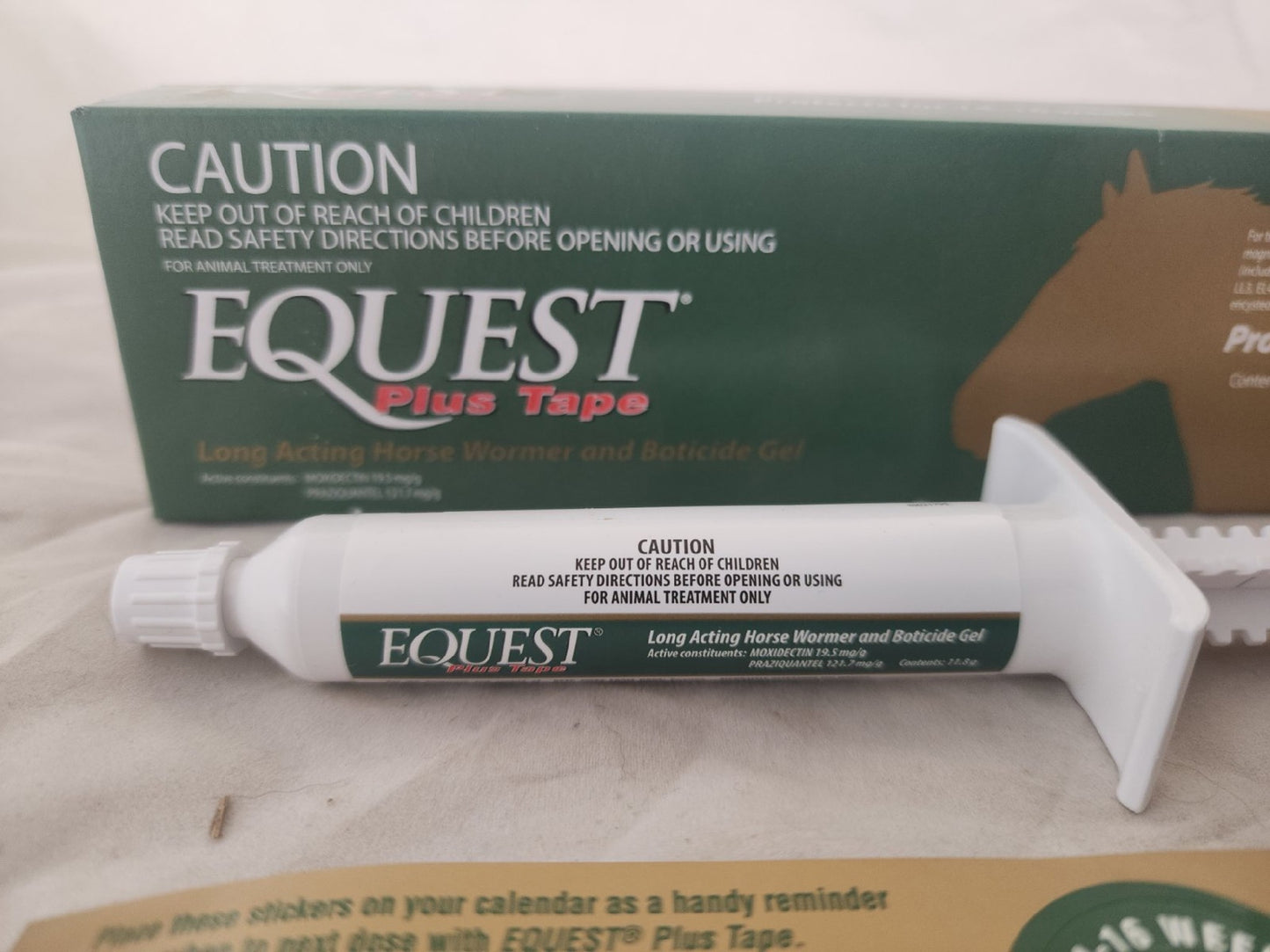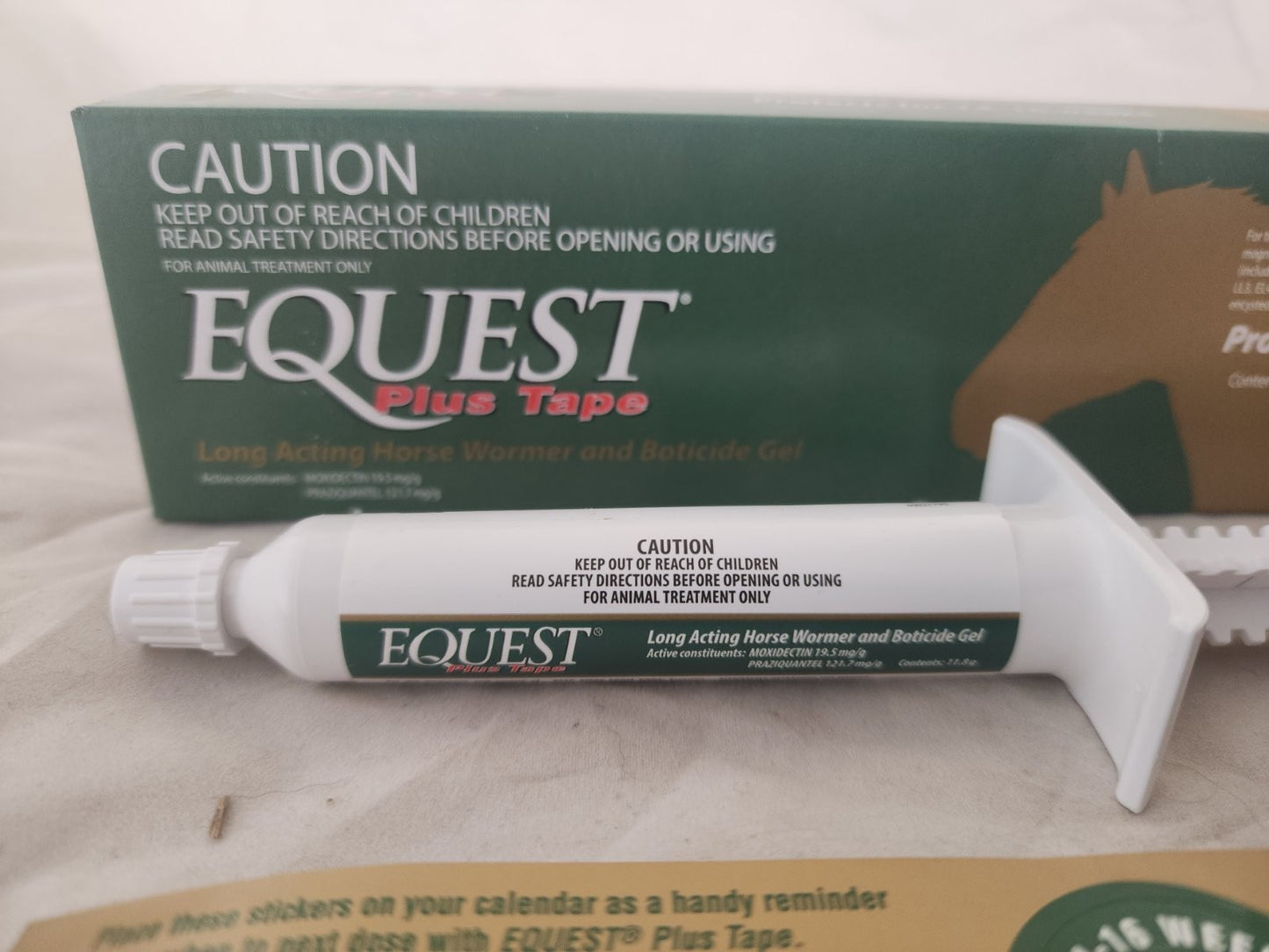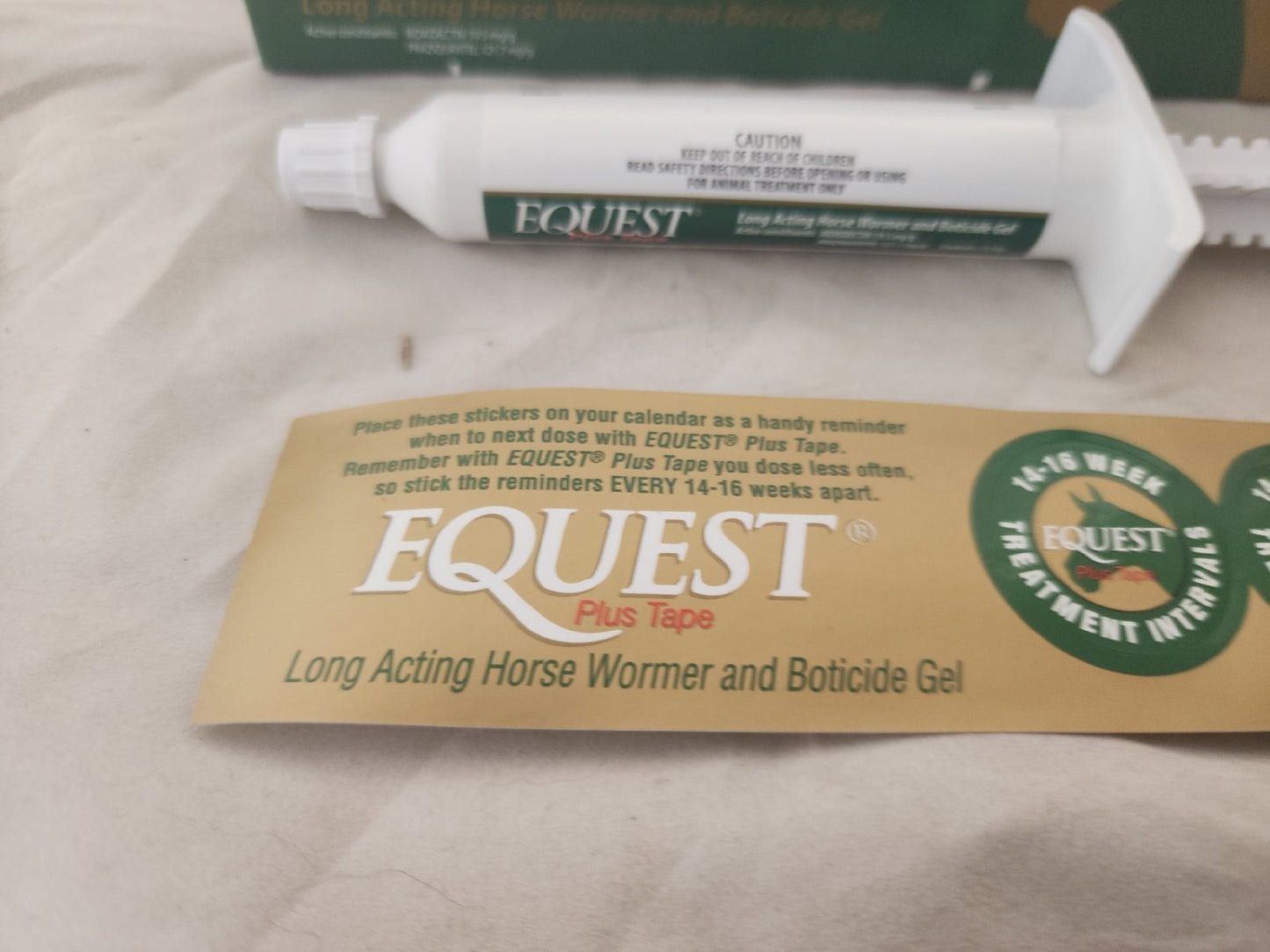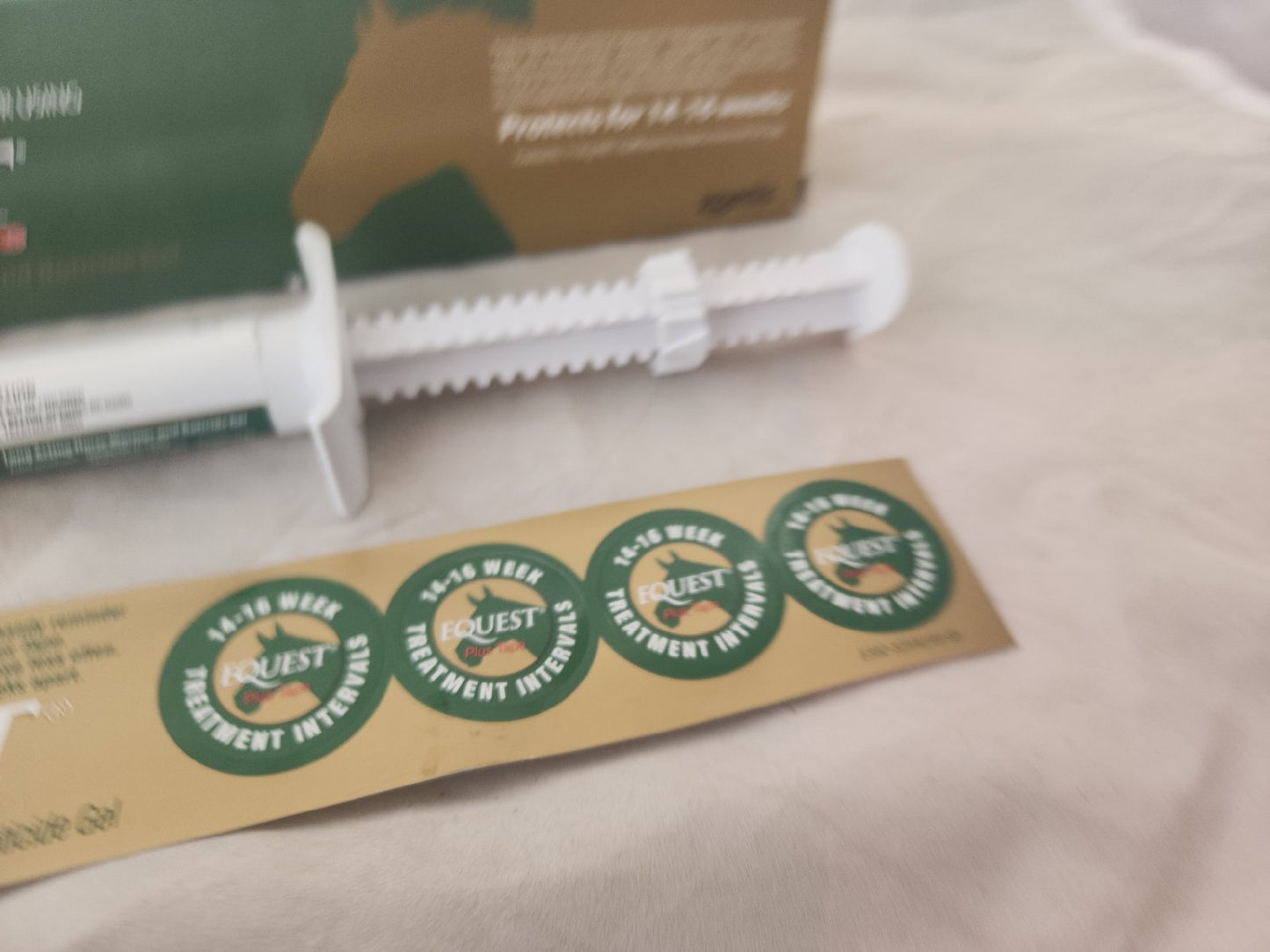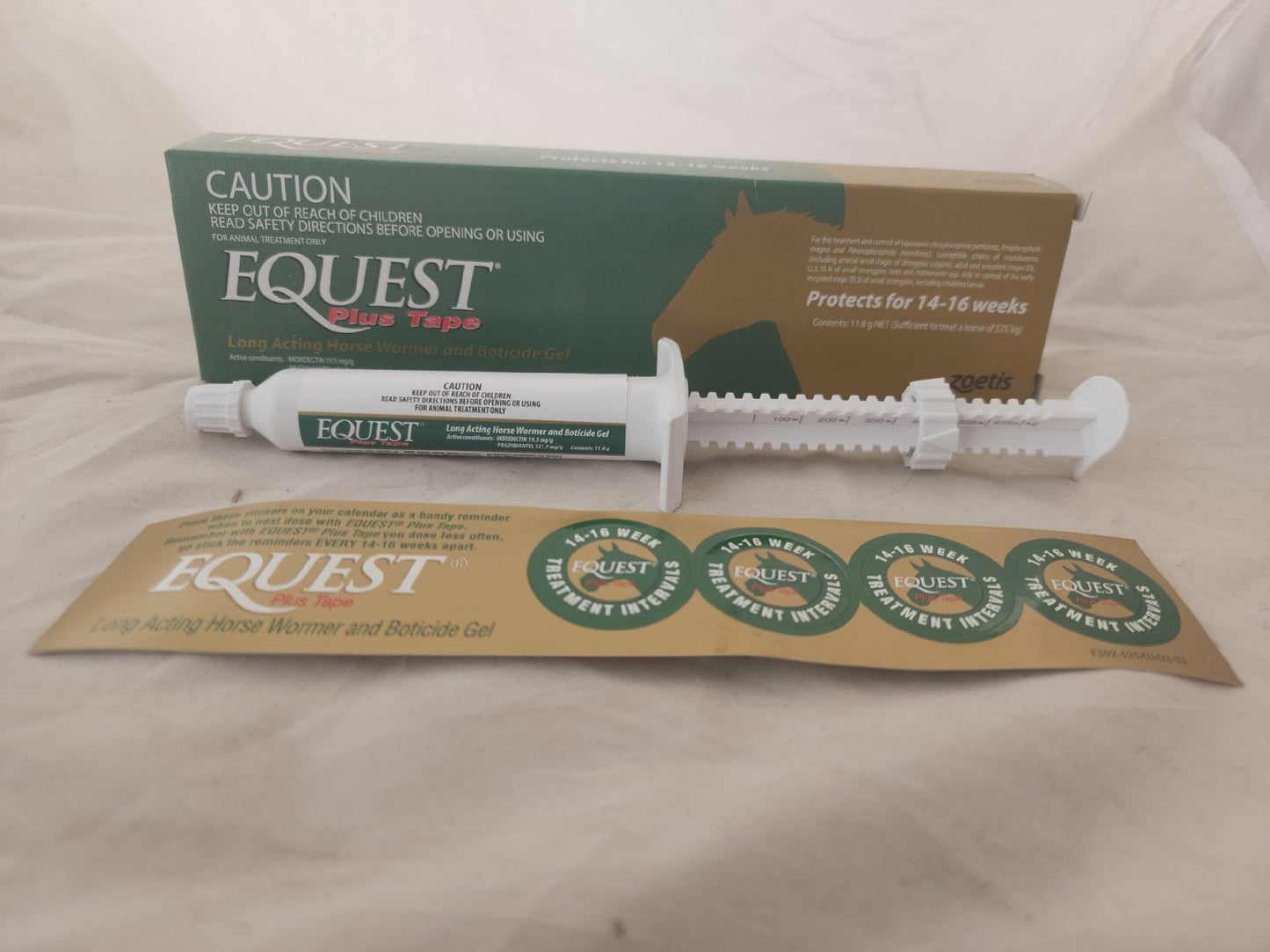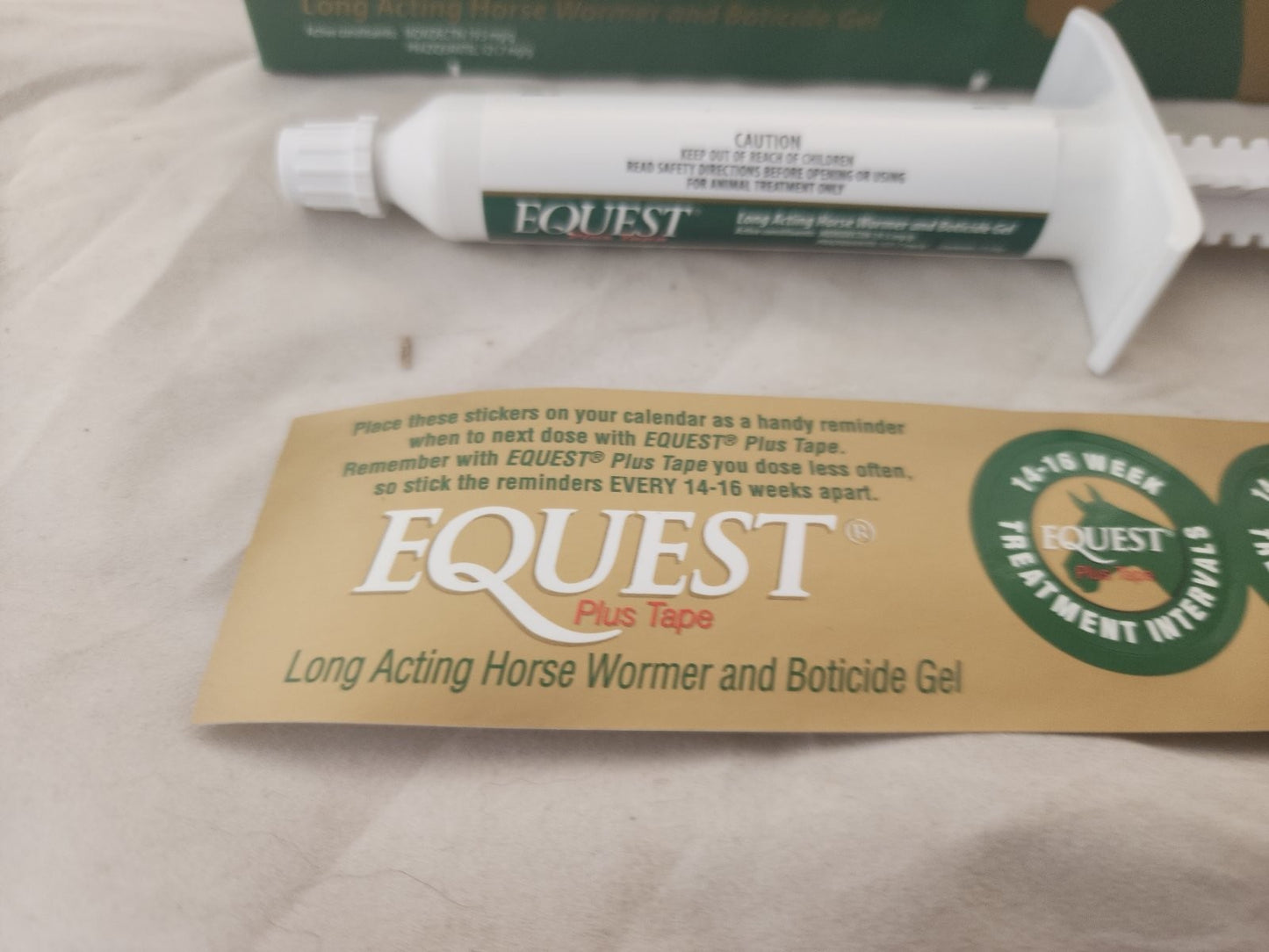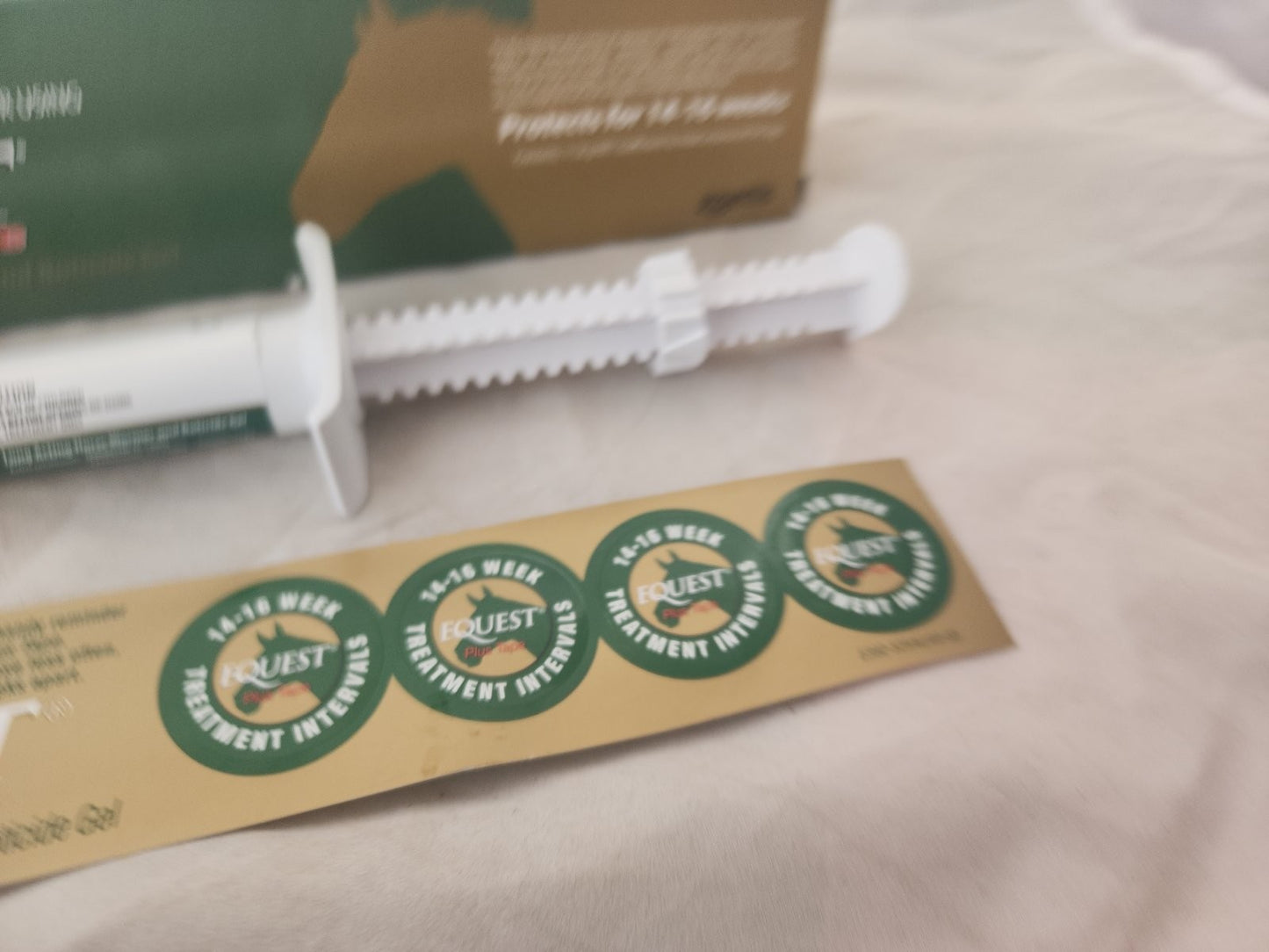1
/
of
10
Zoetis Equest Plus Tape
Zoetis Equest Plus Tape
Regular price
$29.75 AUD
Regular price
Sale price
$29.75 AUD
Unit price
/
per
Couldn't load pickup availability
Description:
Equest® Plus Tape contains moxidectin and praziquantel, sufficient to treat a horse of up to 575 kg.
Controls tapeworm, bots and gastrointestinal roundworms including adult and encysted stages and benzimidazole resistant strains of small strongyles.
Long acting: The Egg Reappearance Period (ERP) for Equest® Plus Tape is at least 14 weeks, which means that recontamination of the pasture by strongyle eggs is significantly reduced during this period.
Unique gel formulation that dissolves rapidly on the tongue, aiding compliance.
A dial-up syringe is designed with a narrow barrel to allow easy access into the side of the horse’s mouth to deliver the right dose every time.
Recommendations for use:
Equest® Plus Tape is palatable and effective for the treatment and control of:
Tapeworm: Anoplocephala perfoliata, Anoplocephala magna and Paranoplocephala mamillana.
Large Strongyles: Strongylus vulgaris (adults, L3 and L4 arterial stages), Strongylus edentatus (adults and L4 visceral larval stages), Strongylus equinus (adults), Triodontophorus spp. (adults) including T. brevicauda,
T. serratus and T. tenuicollis, Craterostomum acuticaudatum (adults).
Small Strongyles (adults): Cyathostomum spp. including C. catinatum and C. pateratum; Cylicostephanus spp. including C. calicatus, C. goldi; C. longibursatus and C. minutus, Cylicocyclus spp. including C. brevicapsulatus,
C. elongatus, C. insigne, C. leptostomum, C. nassatus, C. radiatus, C. ashworthi and C. ultrajectinus; Cylicodontophorus bicoronatus; Coronocyclus spp. including C. coronatus, C. labiatus and C. labratus; Gyalocephalus capitatus; Parapoteriostomum mettami; Peterovinema poculatus; Poteriostomum imparidentatum, as well as benzimidazole resistant strains.
Pinworms: Oxyurus equi (adults and L3/L4 larval stages). Ascarids: Parascaris equorum (adults and intestinal stages (L4)). Hairworms: Trichostrongylus axei (adults).
Intestinal Threadworms: Strongyloides westeri.
Large Mouthed Stomach Worms: Habronema spp. – gastric and cutaneous (summer sore) forms. Stomach Bots: Gasterophilus intestinalis (2 & 3 stage larvae), Gasterophilus nasalis (2 & 3 stage larvae). Cutaneous Onchocerciasis: Onchocerca spp. (microfiliariae).
Equest® Plus Tape contains moxidectin and praziquantel, sufficient to treat a horse of up to 575 kg.
Controls tapeworm, bots and gastrointestinal roundworms including adult and encysted stages and benzimidazole resistant strains of small strongyles.
Long acting: The Egg Reappearance Period (ERP) for Equest® Plus Tape is at least 14 weeks, which means that recontamination of the pasture by strongyle eggs is significantly reduced during this period.
Unique gel formulation that dissolves rapidly on the tongue, aiding compliance.
A dial-up syringe is designed with a narrow barrel to allow easy access into the side of the horse’s mouth to deliver the right dose every time.
Recommendations for use:
Equest® Plus Tape is palatable and effective for the treatment and control of:
Tapeworm: Anoplocephala perfoliata, Anoplocephala magna and Paranoplocephala mamillana.
Large Strongyles: Strongylus vulgaris (adults, L3 and L4 arterial stages), Strongylus edentatus (adults and L4 visceral larval stages), Strongylus equinus (adults), Triodontophorus spp. (adults) including T. brevicauda,
T. serratus and T. tenuicollis, Craterostomum acuticaudatum (adults).
Small Strongyles (adults): Cyathostomum spp. including C. catinatum and C. pateratum; Cylicostephanus spp. including C. calicatus, C. goldi; C. longibursatus and C. minutus, Cylicocyclus spp. including C. brevicapsulatus,
C. elongatus, C. insigne, C. leptostomum, C. nassatus, C. radiatus, C. ashworthi and C. ultrajectinus; Cylicodontophorus bicoronatus; Coronocyclus spp. including C. coronatus, C. labiatus and C. labratus; Gyalocephalus capitatus; Parapoteriostomum mettami; Peterovinema poculatus; Poteriostomum imparidentatum, as well as benzimidazole resistant strains.
Pinworms: Oxyurus equi (adults and L3/L4 larval stages). Ascarids: Parascaris equorum (adults and intestinal stages (L4)). Hairworms: Trichostrongylus axei (adults).
Intestinal Threadworms: Strongyloides westeri.
Large Mouthed Stomach Worms: Habronema spp. – gastric and cutaneous (summer sore) forms. Stomach Bots: Gasterophilus intestinalis (2 & 3 stage larvae), Gasterophilus nasalis (2 & 3 stage larvae). Cutaneous Onchocerciasis: Onchocerca spp. (microfiliariae).
Share
